The triumphant return of the Mega Archive! I've missed doing these, especially now that life's about to get a whole lot more interesting for the Sega Genesis/Mega Drive. We've now entered the autumn of 1991, with this feature covering the entirety of October and a bit of November (in a nice bit of synchronicity with this blog's October 2019 date). We'll also hit the milestone of 200 Genesis/MD games this time around! And to think, only 140 of those were shoot 'em ups.
The assortment we have for Part XIII definitely has a homegrown feel, with the biggest names coming from the United States and the United Kingdom. In fact, we'll be seeing three games this time that were developed in the UK, so it's really starting to coagulate in my mind how much local support the Mega Drive saw here. For a while longer, the Mega Drive could reign unchallenged in Europe: the PAL SNES wouldn't show up until the April of next year. Another curious trend for this batch is how many of them are ports of computer games that came out many years prior, some as early as 1984. It feels like the big western publishers - including Electronic Arts, who were behind one third of this week's group - were trolling their back catalogs for anything they could adapt to the 16-bit console. Some of these games were worth taking out of mothballs, while others were very much not.
Before we dig in, let's remind ourselves of how far we've come:
- Part I: 001-020 can be found here.
- Part II: 021-035 can be found here.
- Part III: 036-050 can be found here.
- Part IV: 051-065 can be found here.
- Part V: 066-080 can be found here.
- Part VI: 081-098 can be found here.
- Part VII: 099-115 can be found here.
- Part VIII: 116-130 can be found here.
- Part IX: 131-145 can be found here.
- Part X: 146-160 can be found here.
- Part XI: 161-175 can be found here.
- Part XII: 176-190 can be found here.
Part XIII: 191-205 (October '91 - November '91)
191: ToeJam & Earl
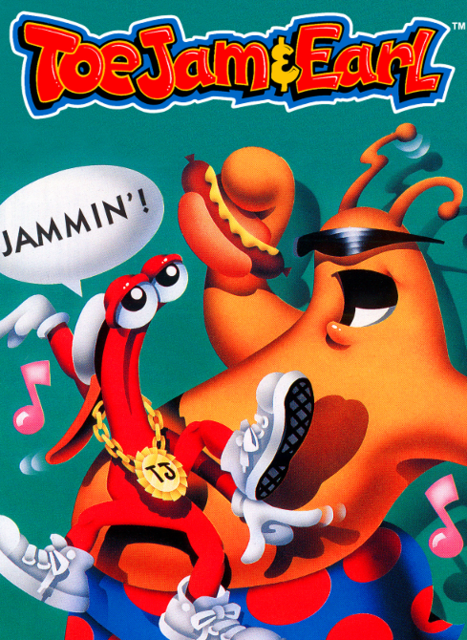
- Developer: Johnson-Voorsanger Productions
- Publisher: Sega
- JP Release: 1992-03-13
- NA Release: October 1991
- EU Release: November 1991
- Franchise: ToeJam & Earl
- Genre: RPG (Roguelike)
- Theme: Sci-fi
- Premise: Two funky fresh aliens have crashlanded on the most bogus of backwaters, Earth, and need to find all the scattered pieces of their sweet ride before they can bail.
- Availability: Oh, it's available in all sorts of places. Most convenient right now would either be the standalone Steam executable or the Sega Genesis Mini. You could also play the new TJ&E game, Back in the Groove, which is more or less a remake of this original.
- Preservation: A game created from creator Greg Johnson's two loves of A) hip-hop and B) a game he couldn't stop playing during his college years named Rogue, ToeJam & Earl was for many of us our first introduction to the now-ubiquitous "roguelike" genre. That is, those specific dungeon-crawlers that rely on procgen for its level design, randomized effects from its consumable power-ups, and a game over state that requires you start over from scratch with all-new variables in play. You could also make the case that the game's urban styling helped to further solidify Sega's "too cool for school" public image around this time, with which they were pushing ahead in markets susceptible to that manner of braggadocio. Fuck, I sound old.
192: Caliber .50
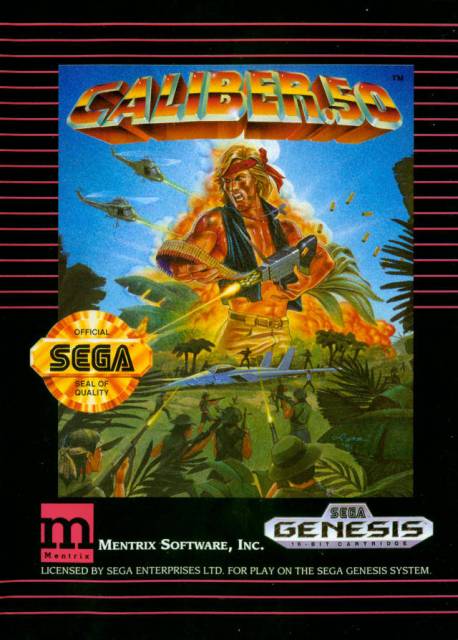
- Developer: Dragnet
- Publisher: Mentrix Software
- JP Release: N/A
- NA Release: October 1991
- EU Release: N/A
- Franchise: N/A
- Genre: Shooter
- Theme: Modern Military
- Premise: Captain Addis flies into Vietnam to save some jet pilot POWs left behind twenty years ago. Given the game's difficulty, it's unlikely you'll get to win this time.
- Availability: Let's say "not very". SETA's IPs eventually went to Aruze/Universal, a company that only makes pachinko machines now. Unlikely to see this released again in any form.
- Preservation: Hard to say when this arcade top-down shooter originally came out on Genesis, but it was being advertised in game mags around October '91 so that's where it's ended up here (for the record, any "best guess" dates aren't added to the wiki page: it's just to organize this blog feature a little better). SETA Corp. developed the game for arcades a few years after SNK's Ikari Warriors and Capcom's Commando, which were clear inspirations, and its circuitous level design took full advantage of the game's 360-degree gun aiming. Despite a format similar to multi-directional dual-stick shooters, as far as I know neither the original arcade game nor this (it should be said, shoddy) port had a second stick: instead, the player used two buttons to move their gun's trajectory either clockwise or counterclockwise around their character, like the functionality added to home ports of Capcom's Forgotten Worlds. This Genesis port, handled by Dragnet/Mentrix (a combo we've seen previously for Wardner [Ep. VIII]) and exclusive to North America, is more than a little rough around the edges. They made the protagonist look like some kid in dungarees and a blond bowlcut: more Dennis the Menace than Rambo: First Blood Part II (from which they borrowed the port's new story).
193: Fatal Rewind / The Killing Game Show
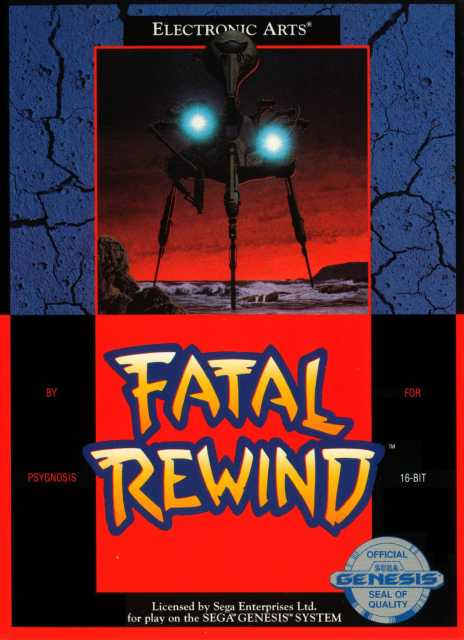
- Developer: Raising Hell
- Publisher: Electronic Arts
- JP Release: 1993-08-20 (as The Killing Game Show)
- NA Release: October 1991 (as Fatal Rewind)
- EU Release: November 1991 (as Fatal Rewind)
- Franchise: N/A
- Genre: Platformer / Shooter
- Theme: Sci-fi
- Premise: A resistance fighter in the grim future is captured by the authorities and forced to compete in the nation's bloodiest TV game show.
- Availability: Liverpudlian studio Raising Hell stuck around for a long time, becoming Bizarre Creations in the mid-90s and lasting until the 2010 releases of Blur and James Bond 007: Blood Stone. Their IPs no doubt belong to their parent company Activision Blizzard, though I can't see them resurrecting The Killing Game Show any time soon. Maybe if they could figure out how to turn it into a lootbox-filled battle royale game? Remaking a game set in an oppressive capitalist dystopia feels a little on the nose for them.
- Preservation: Also known as "The Killing Game Show," this dual side-scrolling action-platformer has you quickly ascending a level slowly sinking into the water to the presumed cheers of millions of bloodthirsty viewers. It's another one of those Amiga/ST port overs, though one that benefits from having the original developers on board. If you're wondering about the new name it comes from the game's novel feature of showing a replay of your run after you die and then allowing you to continue by taking manual control of your past self at any point: the idea being that you can pinpoint where you went wrong and course-correct from there.
194: M-1 Abrams Battle Tank
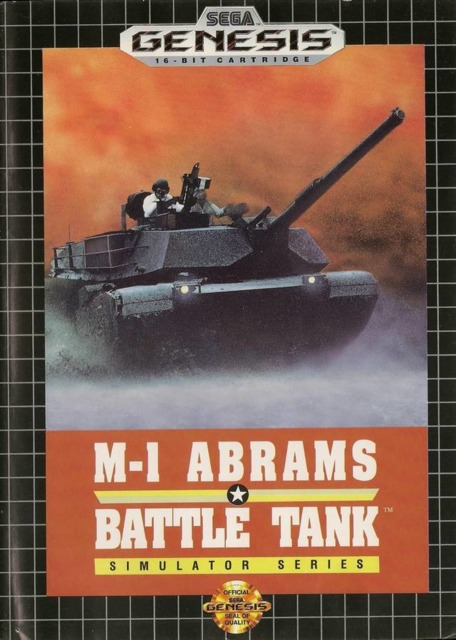
- Developer: Realtime Games Software
- Publisher: Sega
- JP Release: N/A
- NA Release: October 1991
- EU Release: 1991
- Franchise: N/A
- Genre: Simulation
- Theme: Modern Military
- Premise: You've already tried rolling around at the speed of sound with Sonic, so how about rolling around at the speed of a giant, heavy, metal box on wheels? Happy Tanksgiving.
- Availability: The issue with simulation games is that they get outclassed quickly by the next thing to come along.
- Preservation: Again, hard to pinpoint a date, but a whole bunch of European game mags were reviewing import copies from the States in October so that seems the likeliest suspect, though it's also possible it landed around the same time as its simulator cousin 688 Attack Sub [Ep. X] back in the summer of '91. M-1 Abrams Battle Tank has the veneer of a serious (and seriously slow) simulation game, but it's actually designed to be relatively accessible and brisk - this ultimately won it as many fans as it did detractors in the vehicle sim community. The history of this game, in which Sega sought out a group of talented programmers from the UK to help successfully transplant the game's showy 3D graphics, has a curious parallel with Nintendo and Argonaut collaborating on Star Fox for the SNES. Speaking of, Realtime was behind the European Starfox game that forced Nintendo to change the name of their game to Star Wing for its PAL release. Oops, I'm talking about SNES games in a Mega Drive-themed blog again. It's back to prison for me.
195: Mike Ditka Power Football
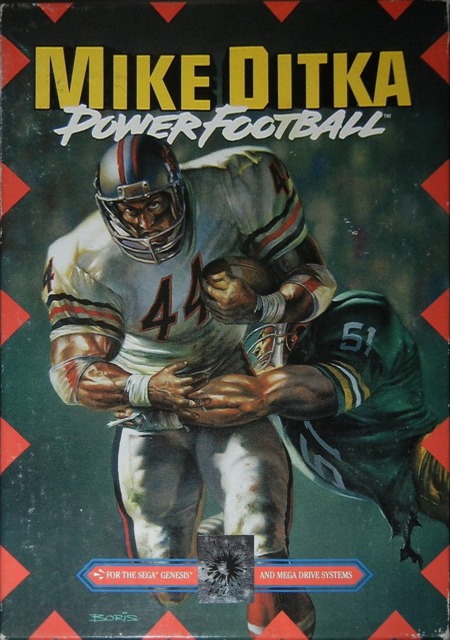
- Developer: Accolade
- Publisher: Ballistic
- JP Release: N/A
- NA Release: 1991
- EU Release: October 1991
- Franchise: N/A
- Genre: Football
- Theme: Pro Sports
- Premise: Iron Mike Ditka coaches you through the NFL pennant race in this football game from Accolade.
- Availability: Never technically legal, I doubt anyone's in a rush to bring it back, least of all crotchety old man Ditka. I'd like to think Accolade's IPs are consigned to the abyss in which they belong, but a new Bubsy game came out this year to further prove we live in an era of endless nightmares.
- Preservation: Another questionable October release, though there were contemporary reviews popping up suggesting that date is correct. It's not clear if it was released the same month in the US and Europe, though. It's another sports game with a celebrity endorsement, though it doesn't have a license. Like, any license. Not from the NFL and not from Sega either. Accolade was back to their old tricks again, and another step towards the eventual lawsuit they would have with Sega for illegally distributing self-manufactured games on their platform (see also Ishido, [Ep. VI], for more info on that). In fact, that court case started this very month in history, though Accolade would continue to produce unlicensed games for another couple of years while litigation proceeded. Accolade would eventually be bought by and merged with French company Infogrames, who have kept alive their spirit of legally dubious antics with a spate of controversies surrounding their new Atari VCS console.
196: StarFlight
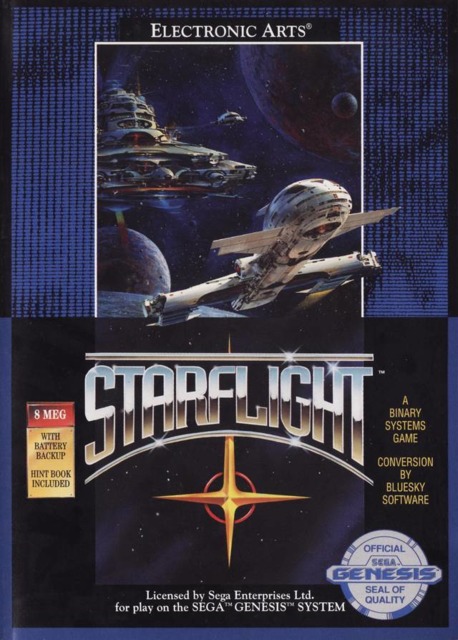
- Developer: BlueSky Software
- Publisher: Electronic Arts
- JP Release: N/A
- NA Release: 1991-10-07
- EU Release: November 1991
- Franchise: Starflight
- Genre: Space Sim
- Theme: Sci-fi
- Premise: Buy a ship, staff it with human and alien officers, and take to the stars in this open-ended space-sim RPG. The galaxy is your oyster! (Though, for real, watch out for giant space oysters.)
- Availability: The Genesis version might be hard to find, but you can sweep up the PC Starflight and its sequel on GOG for a song. Or maybe play one of the many games it inspired, like Star Control II or Mass Effect.
- Preservation: EA's still porting over these older but well-acclaimed CRPGs, introducing them to a younger audience who might only use the household computer for homework. Starflight's open-ended space opera adventure is a precursor to Star Control II, the predecessor of which we've already seen in this feature [Ep. IX], and likewise manages to balance space exploration, mining, trading, diplomacy with aliens, ship-to-ship combat, and planetside away missions across the game's hundreds of star systems. Like Elite and No Man's Sky, it uses a form of procgen to create its massive universe, which has the added benefit of making each bespoke world actually feel like a brand new discovery. It's also another game by Greg Johnson, who was having a good month as far as the Genesis was concerned. Maybe there's an interview somewhere that suggests the Genesis Starflight port and ToeJam & Earl was a package deal...? At any rate, the Genesis port benefits from being several versions deep - the game had been slowly rolled out on multiple computer platforms, starting with PC and moving onto C64, Amiga, Atari ST, and Macintosh - and had several new features by the time of its release, as well as new graphics.
197: Dragon's Fury / Devil Crash MD
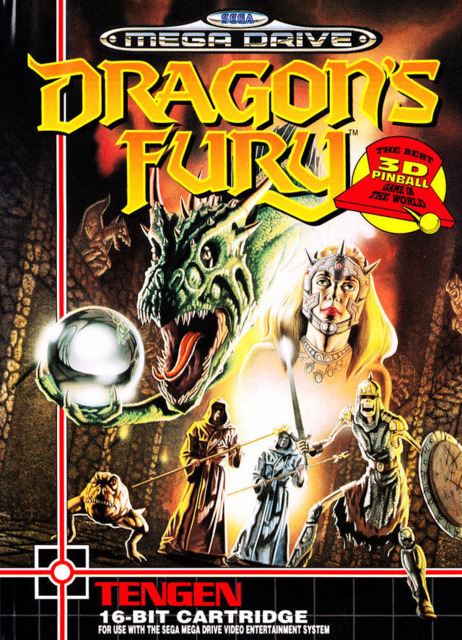
- Developer: Technosoft
- Publisher: Technosoft (JP), Tengen (NA/EU)
- JP Release: 1991-10-10 (as Devil Crash MD)
- NA Release: July 1992 (as Dragon's Fury)
- EU Release: 1992-09-24 (as Dragon's Fury)
- Franchise: Crush Pinball
- Genre: Pinball
- Theme: Dragons / Devils
- Premise: Smack a pinball up the Devil's Chute in this hellish pinball game sequel to Alien Crush.
- Availability: You can still buy the TurboGrafx-16 version on Wii U's Virtual Console, at least for a little while longer, and on the PlayStation Network stores for PS3, PSP, and PS Vita.
- Preservation: I thought this looked familiar. I covered Naxat's Devil's Crush back when I was working on the TurboGrafx-16 library, and it's odd to see it show up here with a new title but little else changed. The game's still chock-full of demonic imagery and skulls and shit - it's not like the Genesis shied away from that material, given Crue Ball's only a few months away - but I guess Sega had a word with port developers Technosoft (the Thunder Force guys) about putting the word "devil" in the title while the States was in the midst of another Satanic panic. The Crush Pinball series was highly regarded in its time, but I find I lose my patience real fast with this genre given how frequently balls seem attracted to those side gutters. Though the main table is unchanged bar a few carefully edited pentagrams, the Genesis version switches up how the bonus zones work and has a final boss that can be fought once the player's investigated every other bonus area on the table.
198: Mystical Fighter / Maou Renjishi
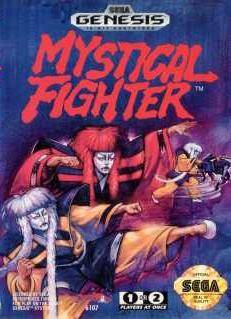
- Developer: KID
- Publisher: Taito (JP) / DreamWorks (NA)
- JP Release: 1991-10-25 (as Maou Renjishi)
- NA Release: March 1993 (as Mystical Fighter)
- EU Release: N/A
- Franchise: N/A
- Genre: Brawler
- Theme: Japanese Mythology
- Premise: A demon king is invading ancient Japan and a couple of lions are having none of it. They won't take this infernal invasion lyin' down!
- Availability: Nah. Taito would put out compilations of their old games on occasion, but only the arcade ones they personally developed. Mystical Fighter was (and remains) exclusive to the Mega Drive.
- Preservation: A kabuki-themed brawler. Not something you see every day, and certainly not something you'd expect to see localized given the deep Japanese cultural references. Part of the Japanese title, Renjishi, refers to a specific kabuki dance involving two lions: the two-player mode includes both a white-haired and red-haired "lion". We met developers KID (short for "Kindle Imagine Develop") last episode with Master of Weapon [Ep. XII], and this is the only other game they developed for the Sega Mega Drive. My favorite thing to do in this game is pick up and throw enemies or giant swing them around: the latter causes damage to the player, but it's so effective for clearing a room.
199: Wonder Boy in Monster World / Wonder Boy V: Monster World III
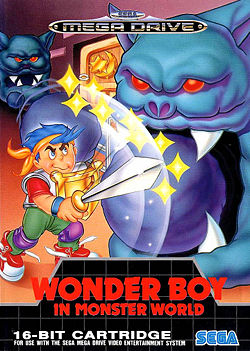
- Developer: Westone
- Publisher: Sega
- JP Release: 1991-10-25 (as Wonder Boy V: Monster World III)
- NA Release: February 1992 (as Wonder Boy in Monster World)
- EU Release: April 1992 (as Wonder Boy in Monster World)
- Franchise: Wonder Boy
- Genre: Platformer / RPG
- Theme: Fantasy
- Premise: Wonder Boy's escaped the Monster Lair only to wind up in a Monster World. Talk about out of the frying pan and into the fire...
- Availability: Three of the Monster World games, including this one, were semi-recently (PS3/X360 era) released in a compilation pack called Sega Vintage Collection: Monster World. It's also available separately on Steam and included on the Sega Genesis Mini. Just don't accidentally confuse it with Monster Hunter World, that's something else.
- Preservation: The ever-convoluted Wonder Boy series makes its second and last (sorta) appearance on the Sega Mega Drive with Wonder Boy in Monster World, also known as Wonder Boy V. As well as the fifth Wonder Boy game (again, sorta) it is also the third "Monster World" game, a sub-series within a series, which are the specific Wonder Boy games that have more RPG elements in them like stores where you can buy new weapons, power-ups, and health upgrades. The previous two Monster World games were Master System and Game Gear joints, and Monster World IV doesn't even have the Wonder Boy brand: it's a standalone game with a new female protagonist. I don't need to get into this whole confusing chronology again, so I'll just say these games are mad cute.
200: Shogi no Hoshi
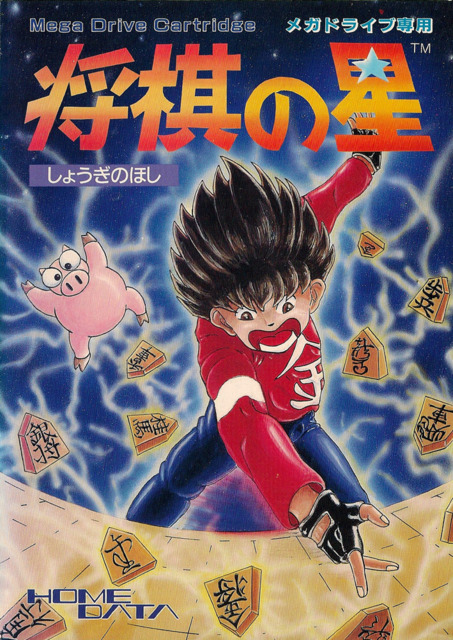
- Developer: Home Data
- Publisher: Home Data
- JP Release: 1991-10-31
- NA Release: N/A
- EU Release: N/A
- Franchise: N/A
- Genre: Shogi
- Theme: Comedy
- Premise: Play a bunch of chess against odd cartoon characters in this, the first game of its genre for Mega Drive.
- Availability: No heckin' way is this game still available anywhere. Maybe in the Super Potato's basement, nestled between a crate of expired Pocky and Japan's Only Ouya (TM).
- Preservation: Boy, I wish I'd organized this feature a little better so the 200th entry wasn't some weird-ass shogi game. Shogi is the Japanese version of chess and a very common subject for Famicom/SuFamicom games. It's a minor miracle that it took this long for a Mega Drive adaptation to arrive. Magical Company, back when they were still called Home Data, gave this shogi game an odd sense of humor that I figure was probably inspired by Crayon Shin-Chan: it seems to depict a semi-antagonistic mother/son relationship, where the former is cajoling the latter into becoming a shogi champion despite being some punk tween. At one point during the intro she flips her child the bird, so it seems wholesome enough.
201: Battle Master
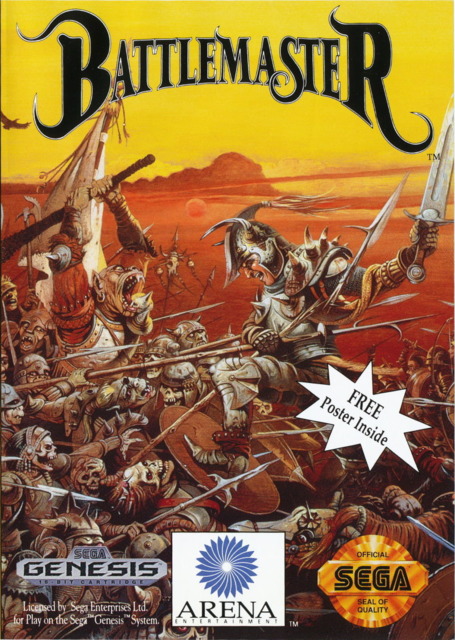
- Developer: Mirrorsoft
- Publisher: Arena Entertainment
- JP Release: N/A
- NA Release: November 1991
- EU Release: N/A
- Franchise: N/A
- Genre: Action-Adventure
- Theme: Fantasy
- Premise: Fight your way across a war-torn fantasy kingdom with four of your dumbest AI compatriots in this action strategy game from the UK.
- Availability: Mirrorsoft's IPs were scattered to the winds after their closure in 1992. Whoever has this license now evidently doesn't care about it and I can't really blame them.
- Preservation: Battle Master is sort of like a fantasy Cannon Fodder that's nowhere near as responsive or fair. It is, however, light on RPG and complex strategy mechanics which is probably why it was considered for a console port. Mirrorsoft, a UK developer that was a branch of the Mirror Group (those behind one of the trashier tabloid newspapers), evidently had ambitions to break into the lucrative MD market that swiftly collapsed once the Group's mogul owner, Robert Maxwell, died in a freak yacht accident and was later found to have embezzled huge amounts of cash from the company's pensions. Mirrorsoft didn't stick around long after that. I wish I had positive things to say about Mirrorsoft's one and only MD game, and our third UK game this week, but calling it a clusterfuck would be too kind.
202: Dark Castle
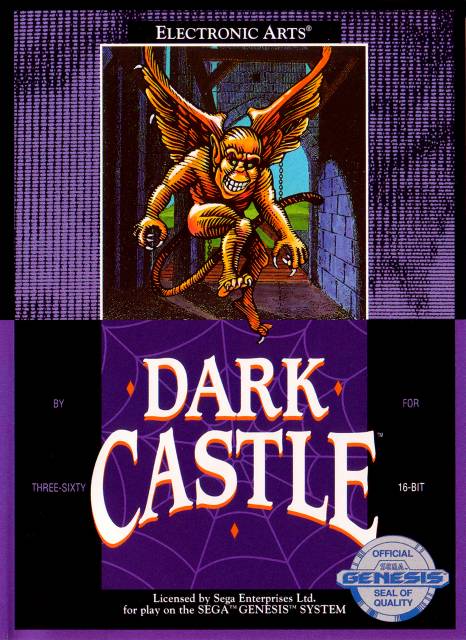
- Developer: Silicon Beach Software / Three-Sixty Pacific
- Publisher: Electronic Arts
- JP Release: N/A
- NA Release: 1991?
- EU Release: 1991-11
- Franchise: Dark Castle
- Genre: Action-Adventure
- Theme: Fantasy
- Premise: Guide the easily-befuddled hero Duncan through the titular fortress and confront the dreaded Black Knight in this Mac game port.
- Availability: Sort of! If you buy Return to Dark Castle on the Mac App Store, it includes a remake of the first game.
- Preservation: Dark Castle is one of those games that is beloved by a certain crowd of computer gamers of the 1980s, specifically the ones that threw their lot in with the Apple Macintosh early on back when they still had black and white monitors. It's a single-screen action platformer that likes to switch things up every level, creating some new type of obstacle to overcome each time. In addition to the usual jumping, ducking, and running, the protagonist can toss rocks in any direction, best used for eliminating small annoying enemies or stunning larger foes. The Genesis port is more of a remake, adding color as well as sprucing up the graphics, but it still plays as well as you'd expect from a computer game first released in 1986. Silicon Beach, the original developers, would later become better known for their software tools and were eventually absorbed into Adobe Systems. A fun fact about the Dark Castle franchise is that the third game originally began development in 1996 and wasn't released until 2008. Those developers created a castle so dark it took twelve years to find their way out.
203: The Immortal
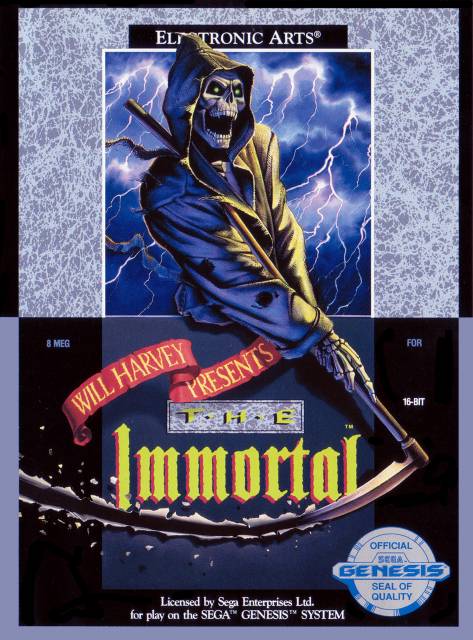
- Developer: Sandcastle / Electronic Arts
- Publisher: Electronic Arts
- JP Release: 1993-08-10
- NA Release: November 1991
- EU Release: November 1991
- Franchise: N/A
- Genre: Action-Adventure
- Theme: Fantasy
- Premise: You're a wizard, and it's fucked up that your mentor has been abducted by an evil dragon. It's time to descend down a dark, trap-filled, monster-infested, urine-soaked... you know, he's probably fine. Master Wizard and all that.
- Availability: The LP's owned by Electronic Arts which once worked with GOG to revive their older games (and now do so themselves for their Origin store) but they've left this one in the mausoleum so far. Kind of an ironic name, in retrospect.
- Preservation: Man, I still get chills thinking about the time I watched my friend play The Immortal. The game is notorious for its gory deaths whenever you walked into a trap or fell prey to a spider, and my friend was not very good at avoiding traps or spiders. It was also intimidating for the level of complexity and challenge involved: it wasn't until I saw an LP years later that it was finally demystified for me. All of this is to say that The Immortal is an atmospheric and intense dungeon-crawler, the kind that really makes you wonder about how sensible it is to wander into a pitch-black underground labyrinth designed by an insane person, and while its methodical pace might be a bit languid for today's audiences I think there's a lot about its presentation that still holds up today. The Genesis version is one of those rare cases where a console port was actually bloodier than the original PC incarnation; I'm guessing EA was supporting Sega of America's promotional push to make the Genesis the cool console for big kids.
204: Joe Montana II: Sports Talk Football
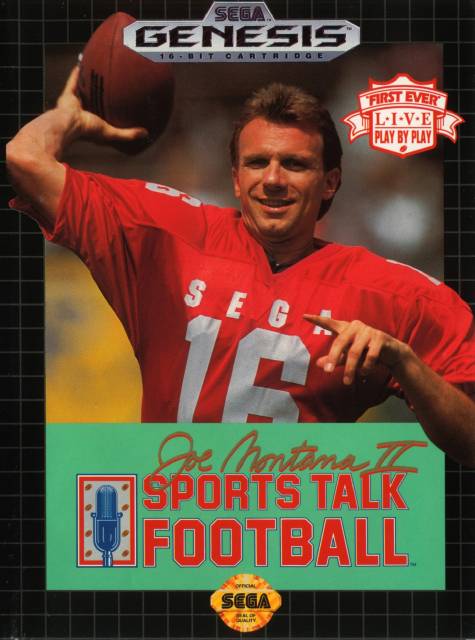
- Developer: BlueSky Software
- Publisher: Sega
- JP Release: 1992-01-24
- NA Release: November 1991
- EU Release: January 1992
- Franchise: Joe Montana Football
- Genre: Football
- Theme: Pro Sports
- Premise: Sure, simulated football is engaging enough, but what if your game could tell you how much you were sucking in real-time? Does Joe Montana II have a commentary robot for you.
- Availability: No-one's bringing back old sports games unless they have Mario in them.
- Preservation: Last time we talked about Sports Talk Baseball [Ep. XII], which used new voice sample software to generate a play-by-play commentary of the game in a vaguely robotic delivery: something that would become commonplace in sports games from this year onwards. That voice sample tech actually originated here, with the second of the Joe Montana-endorsed sports games from Sega. For the first Joe Montana Football [Ep. VII], Sega panicked and impulsively hired Park Place Productions, the guys EA usually brought in for Madden NFL, to get the game finished in time for the holiday season. This time, with a little extra foresight, they instead hired Californian developers BlueSky Software to lead the project. We saw BlueSky a little earlier with the Starflight port, but they would become Sega's frequent sports game collaborators for much of the Genesis's lifespan, also working on the World Series Baseball franchise, College Football's National Championship and its sequel, and the third and fourth Joe Montana games (which, by 1992, would finally have the NFL license).
205: Marble Madness
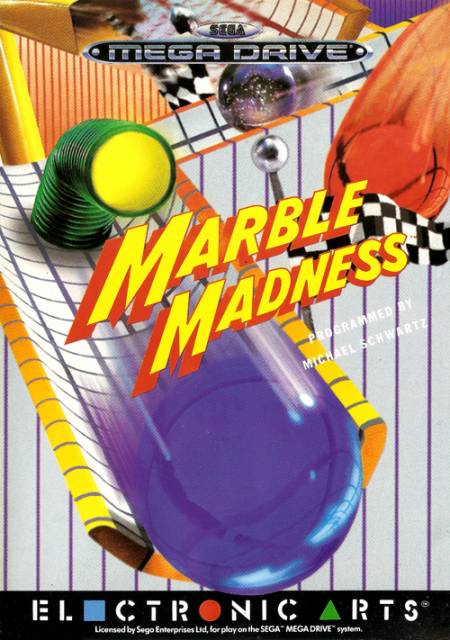
- Developer: Electronic Arts (NA/EU) / Tengen (JP)
- Publisher: Electronic Arts (NA/EU) / Tengen (JP)
- JP Release: 1993-08-13
- NA Release: November 1991
- EU Release: January 1992
- Franchise: N/A
- Genre: Puzzle
- Theme: Abstract
- Premise: Get ready to lose your marbles in this challenging maze navigation arcade game, originally from Atari Games.
- Availability: There's a few "inspired by" marble games on Steam, PSN/XBL and iOS/Android, but the most recent rerelease of the arcade original is probably 2012's slightly iffy Midway Arcade Origins.
- Preservation: A perfect game to end on, as it's both a stone-cold classic and yet another game from the mid-'80s that received a tardy Genesis port in the autumn of '91. Mark Cerny's balls would pleasure and delight audiences long before he took his Knack out, and the challenge and careful controls innate to this abstract puzzler became so indelibly linked to marbles in the video game space that any new "marble" game invariably meant gently maneuvering a fragile ball across a suspended maze of precariously narrow bridges. Some curious history behind this port: Electronic Arts procured the console rights to the game at some point before the end of 1991 and tried to recreate it for the Genesis, leading to some liberties with the material that MM purists might find distasteful. Tengen, or rather the Japanese branch of Atari Games's sneaky home console alias, actually then created their own separate version of Marble Madness exclusive to the Japanese Mega Drive. It's a much more faithful port, and even has trackball support (via the Sega Mouse).
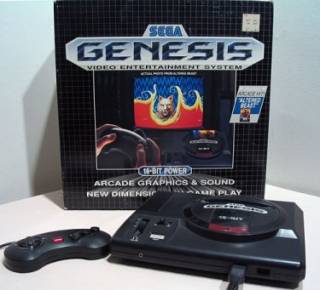
Log in to comment